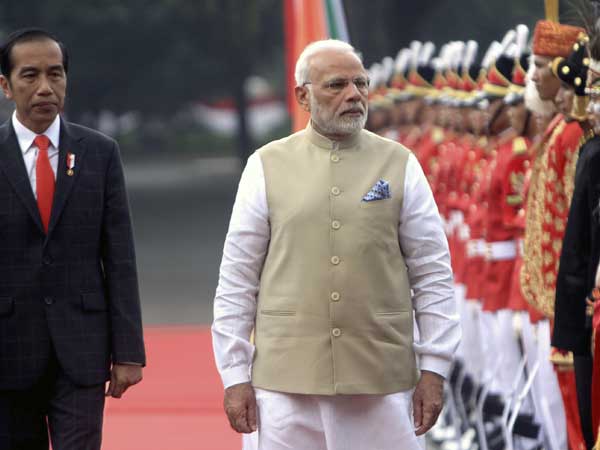
India and Indonesia are close maritime neighbours, but the cold war and authoritarian regimes in Jakarta breached the traditional friendly ties between the two countries for many years. For the past decade, the two neighbours have been on a path of rebuilding their ties, which have now taken the shape of a comprehensive strategic partnership.
The partnership was concluded during prime minister Narendra Modi’s recent visit to Indonesia, signifying the commitment to fostering a closer bilateral relationship with enhanced defence cooperation and a shared vision of maritime cooperation in the Indo-Pacific. It was Modi’s first visit to Indonesia and it completed the round of bilateral visits by Modi to all the Asean countries. It took place after Indonesian president Joko Widodo had visited India twice in little over a year, for a state visit in December 2016 and for the India-Asean commemorative summit in January 2018.
Maritime engagement was one of the key features of the three nation tour undertaken by Modi to Indonesia, Malaysia, and Singapore where he hoped that the visits would further boost India’s Act East policy. The Malaysian visit was a short one to greet the newly elected Malaysian prime minister Mahathir Mohamad.
A large archipelago with a widespread EEZ, facing the Indian Ocean and the South China Sea, Indonesia has sought to enhance its maritime presence in the region. President Widodo reoriented Indonesia’s maritime policy with his Global Maritime Fulcrum policy in November 2014 aimed at making Indonesia an active player in the Pacific and Indian Ocean region.
Indonesia is keen to see a balance of power in the Indo-Pacific region. It has a dispute over the Natuna islands with China but has not allowed it to affect bilateral relations. Indonesia has backed China’s Belt and Road Initiative; China is one of the top investors in Indonesia and its largest trading partner.
At the same time Indonesia has welcomed India’s participation in developing the Sabang port area in Aceh province, the closest Indonesian region to India, a figurative stone’s throw from the Nicobar islands. Sabang is a strategically located deep water port close to the Malacca Straits through which a major part of India’s east bound trade passes. During Modi’s visit, it was decided to set up a joint task force for the purpose.
The two sides emphasized that India occupying a central position in the Indo-Pacific and Indonesia as the fulcrum that connects the Indian Ocean and the Pacific Ocean shared similar perceptions of the evolving maritime environment in the region and the world at large. They expressed their intention to strengthen their maritime cooperation for promotion of peace, stability and bringing robust economic growth and prosperity to the region.
They also agreed to hold annual summits of the leaders and set up new mechanisms for bilateral security dialogue as well as trilateral dialogues involving third parties. They signed 15 agreements in the fields of defence, science, technological cooperation, pharmaceuticals, railways and health and a framework agreement for cooperation in Space.
In his discussions in Jakarta, Modi said that India’s Act East Policy and the vision of SAGAR (Security and Growth for all in the Region) matched president Widodo’s Indonesian Ocean Policy and Global Maritime Fulcrum Vision.
Indonesia and India were natural partners during their struggle for independence which followed a similar trajectory and the early post-independence period was a time of close friendship and cooperation between the two countries and their leaders, Sukarno and Jawaharlal Nehru. Indonesian leaders were inspired by Mahatma Gandhi and other Indian leaders. Later, the advent of authoritarian governments in Indonesia led to decades of disinterest in the relations. Bilateral ties began reviving with first with India’s Look East policy and later with the added emphasis of the Act East policy and India’s greater involvement in the Asean region.
Indonesia is often compared to India because of the number of similarities they share, and not merely the similarity in their names. They are secular, multi-ethnic democracies at similar stages of their economic development and have been strategic partners since 2005. Indonesia is India’s largest trading partner in the ASEAN region. Bilateral trade, which was to the tune of US $13.43 billion in 2016 has now reached $18 billion. Indonesian exports to India are at $14 billion, mainly from palm oil and coal, while Indian exports are worth $4 billion. Indonesia wants trade barriers to be lowered for its commodities while the Indian side has asked Indonesia to reduce its large trade deficit. Indian companies have invested $ 15 billion in the Indonesian economy, but Indonesian investments in India are at a much lower level. The CEOs Business Forum meeting is to prepare a report on ways to enhance economic cooperation. As an influential Indonesia minister said: “India-Indonesia relations are important for the balance of power in Asia.”





